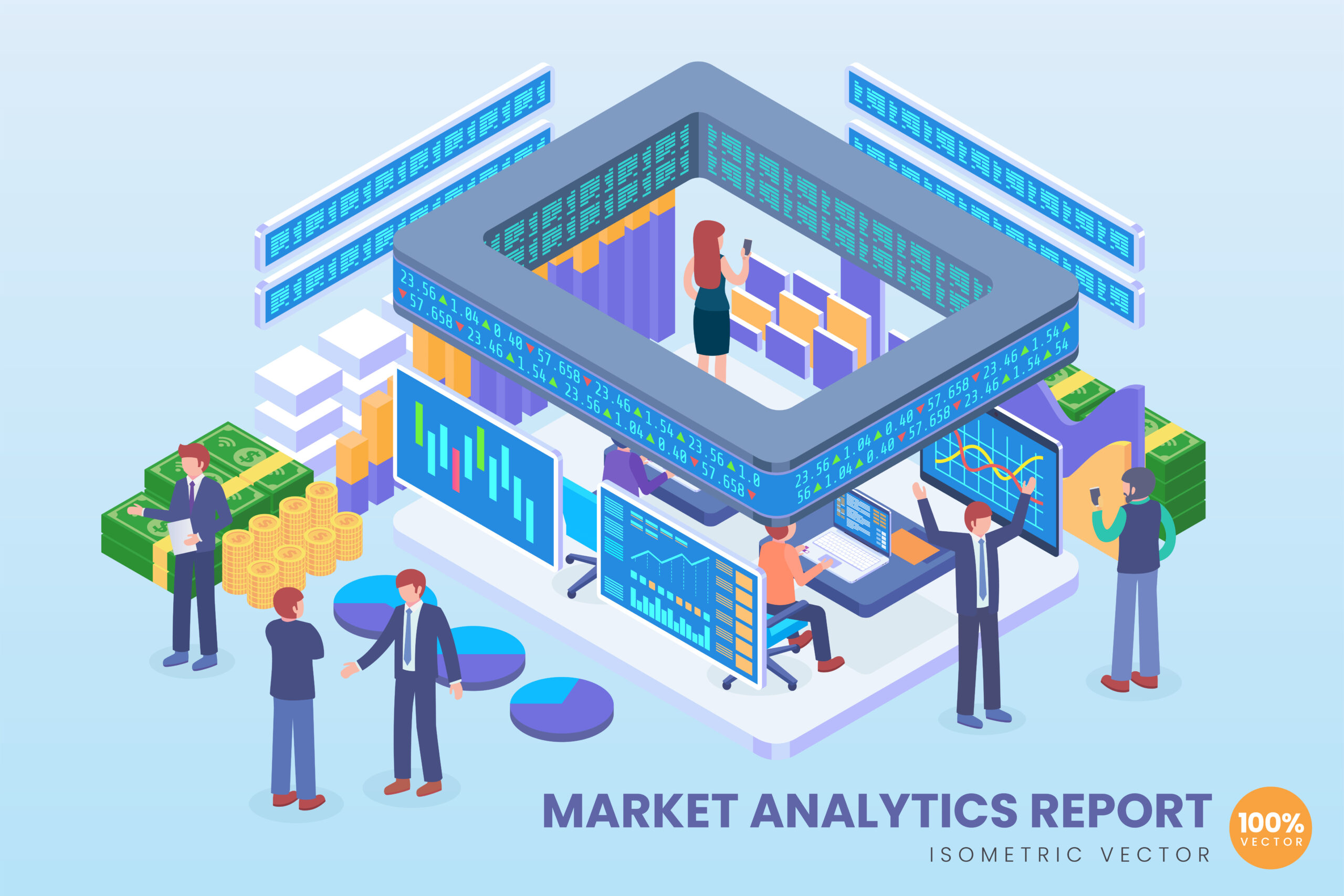
Introduction to Major Forex Markets
Digital Marketing Benefits in the realm of Forex trading are impossible to ignore. In this modern age, the outreach and connectivity made possible through digital platforms have taken Forex trading to new heights. Not only does it make trading more accessible, but it also serves as a powerful tool for education and real-time information dissemination. These advantages are particularly essential in a field as dynamic and global as Forex trading, which opens up a world of opportunities for traders across different continents and time zones.
Forex trading is an ecosystem where currencies are exchanged, speculated upon, and hedged. It is a vast and interconnected arena where financial hubs like London, New York, and Tokyo play pivotal roles. These hubs are not just geographical landmarks; they are bustling arenas where liquidity, trading volume, and Market Participants converge to create trading opportunities. As we explore the major Forex markets around the globe, you’ll come to understand how each market has its distinct characteristics, trading hours, and most-traded Currency Pairs.
In this blog, we aim to offer a comprehensive view of these major Forex markets, detailing how each fits into the global puzzle. Moreover, we’ll delve into the intricacies of Forex Time Zones and their effects on trading strategies and Liquidity in Forex. By the end of this read, you’ll have a firmer grasp on how each market contributes to the Global Currency Markets and how you can harness this knowledge to your advantage.
So, whether you’re a newbie starting your Forex journey or an experienced trader looking to diversify your portfolio, the information we provide will be invaluable. We’ll delve into the nitty-gritty of trading in each of the major Forex Trading Regions and illuminate how International Forex Exchanges operate in these financial centers. By leveraging Digital Marketing Benefits, we strive to bring this comprehensive guide to a wide audience, offering insights that can significantly improve trading strategies and outcomes.
The London Market
The London market stands as a behemoth in the global Forex landscape, often referred to as the “Forex capital of the world.” Its dominance is not accidental; the city’s historical significance, strategic location, and robust financial infrastructure contribute to its supremacy. When we talk about liquidity, the London market is unparalleled. The sheer trading volume it handles every day makes it the most liquid of all Forex markets. For instance, key Currency Pairs like EUR/USD and GBP/USD experience some of their highest trading volumes during the London session.
Yet, what amplifies the market’s reach and efficacy are the Digital Marketing Benefits that trading platforms and financial institutions leverage in London. Advanced trading platforms employ various digital marketing tactics like SEO, PPC, and content marketing to reach out to traders. Educational webinars, real-time analytics, and market insights are often shared through digital channels, making it easier for both novice and experienced traders to make informed decisions.
In the London market, it’s not just about the numbers; it’s also about the variety of market participants. From hedge funds and multinational corporations to individual retail traders, the diversity is extensive. This eclectic mix of Market Participants contributes to the market dynamics, making London a hub where various trading strategies can be employed successfully.
Moreover, the market’s overlap with both the Asian markets (in its early hours) and the American markets (in its later hours) contributes to its high liquidity and trading volume. This overlap period is often considered the best time to trade due to the increased volatility and opportunities for capturing significant price movements.
Digital Marketing Benefits further come into play here by helping traders navigate these overlapping periods. Many trading platforms offer special notifications and trading advice specifically for these high-activity hours, making it even more convenient for traders to take advantage of market conditions.
The London market is more than just a geographical trading hub; it’s a dynamic ecosystem amplified by digital connectivity and a broad spectrum of participants. Its enormous size, significant trading volume, and the variety of Currency Pairs available make it a hotspot for traders looking to maximize their profits. With the added advantage of Digital Marketing Benefits, information dissemination and trader outreach are remarkably efficient, further cementing London’s role as the quintessential Forex market.
The New York Market
Often touted as the financial capital of the world, New York’s Forex market plays a pivotal role in the Global Currency Markets. Specializing in the U.S. Dollar (USD), which is part of most major Currency Pairs, this market is a nexus for trading activity. In addition to being the hub for the world’s primary reserve currency, the New York market has its own idiosyncrasies that set it apart from other trading regions.
One of the defining characteristics of the New York Forex market is the diversity of Market Participants. The market attracts an assortment of traders ranging from retail enthusiasts to high-net-worth individuals and large financial institutions like investment banks and hedge funds. This wide range of participants adds layers of complexity and variety to trading strategies and outcomes.
In terms of trading volume, while London may lead, New York is not far behind. The market becomes particularly active during the overlap between the London and New York sessions, which is often considered the best time to trade given the heightened Liquidity in Forex. Market Participants pay keen attention to economic indicators and announcements originating from the U.S., as these often lead to increased volatility and trading opportunities.
Digital Marketing Benefits are robustly harnessed in the New York market. With the U.S. being one of the frontrunners in technological innovations, many trading platforms are based here, providing cutting-edge tools and services to traders. Advanced trading software, in-depth analytics, and comprehensive educational materials are readily available online. Digital marketing strategies, like targeted advertising and personalized email campaigns, are used to draw in traders and keep them engaged, effectively transforming how trading services are consumed and experienced.
Another interesting facet of the New York market is its interaction with emerging markets. Given the global stature of the U.S. economy, USD pairs with emerging market currencies are also actively traded here. In addition to Currency Pairs like EUR/USD and GBP/USD, pairs involving emerging market currencies experience increased activity, presenting alternative trading opportunities.
The New York market, like London, also benefits greatly from its strategic timing. It overlaps with multiple other markets, including both European and Asian Forex Time Zones. This overlap creates a dynamic trading environment where Market Participants can capitalize on a broad array of trading strategies that take into account different market conditions and Currency Pairs. The New York Forex market is a diverse, bustling, and technologically advanced trading arena. The multitude of Market Participants, unique trading elements, and abundant Digital Marketing Benefits make this market indispensable in the global Forex trading landscape.
The Tokyo Market
As the sun rises in the East, so does the Forex market with the Tokyo session. Though not as voluminous as the London or New York markets, Tokyo serves as the gateway to the Asian Forex market and is integral to the global trading ecosystem. Specializing primarily in the Japanese Yen (JPY), the market attracts both domestic and international traders eager to capitalize on the Yen’s unique market conditions.
The Tokyo market offers a unique trading environment shaped by various economic factors. The Bank of Japan’s monetary policies, for instance, have a significant impact on the Yen’s value. Because Japan is a significant exporter, attention to trade balances, import/export reports, and other economic indicators is crucial for traders who participate in this market.
Just like its Western counterparts, Tokyo leverages the Digital Marketing Benefits to expand its reach and efficiency. Local and international online trading platforms offer services tailored to Japanese traders. From translation features to customized trading tools that consider the peculiarities of the Japanese financial system, digital platforms strive to accommodate the needs of traders in this region. Content marketing through financial blogs, webinars, and real-time updates is common, helping traders stay informed and make better trading decisions.
One noteworthy aspect of the Tokyo market is its role in setting the tone for the trading day. Given its earlier opening hours, what happens in Tokyo often impacts trading sentiment and activity in markets that open later. Forex Time Zones are particularly relevant in this context. Traders worldwide keep an eye on the Tokyo market’s movements to gauge potential trends in Currency Pairs involving the Yen and other Asian currencies. This is where the market’s influence extends far beyond its geographical boundaries.
The significance of Forex Time Zones can’t be overstated, especially concerning the Tokyo market. While it doesn’t overlap with London or New York to the same extent, its trading hours do intersect with the Sydney market and partially with the latter part of the U.S. market, adding another layer of complexity and opportunity for Market Participants. In this sense, the Tokyo market is a vital part of a 24-hour trading cycle that never sleeps.
It’s also worth noting that the Tokyo market isn’t solely limited to the Japanese Yen. Other Asian currencies like the Singapore Dollar (SGD) and the Hong Kong Dollar (HKD) also see increased activity during this period, making Tokyo a hub for broader Asian Currency Pairs.
The Tokyo market may not boast the massive trading volume of London or the diverse Market Participants of New York, but it holds its own unique place in the global Forex landscape. With the enhanced reach and functionalities offered by Digital Marketing Benefits, Tokyo continues to be an essential hub for Forex traders interested in the Asian market and its associated Currency Pairs. Forex Trading Regions such as Tokyo are crucial for Global Currency Markets. These are considered significant International Forex Exchanges that provide unique trading opportunities.
Read more on Major Forex Trading Sessions from Around the World
How Time Zones Affect Trading
While many factors influence Forex trading, the role of Forex Time Zones is often underestimated. However, savvy traders know that understanding time zones is crucial for success in the global trading environment. Different markets open and close at various hours, creating fluctuations in Liquidity in Forex and thereby affecting the feasibility and profitability of certain trades.
Time zones essentially dictate the rhythm of the Forex market, determining when trading activity is at its peak and when it’s relatively subdued. For example, the London and New York markets are bustling hubs of activity, but they operate during distinct hours, separated by multiple time zones. Likewise, as mentioned earlier, the Tokyo market serves as the vanguard of trading activity each day, influencing the sentiment and momentum that may carry through to subsequent markets.
The impact of time zones is particularly noticeable in the area of liquidity. Generally speaking, liquidity is at its highest when two or more markets overlap. Traders who understand this phenomenon align their trading strategies accordingly, targeting high-liquidity periods to execute larger trades without significantly affecting market prices. Consequently, it’s not just about knowing when markets are open but also recognizing the specific periods when they overlap, as these windows provide the most lucrative trading opportunities.
Taking advantage of Forex Time Zones also involves awareness of economic calendars. Economic announcements and indicators are typically released at set times, often when the local market is open. Being aware of these releases can help traders anticipate market movements, manage risks, and set up potential profit opportunities.
This is where Digital Marketing Benefits show their mettle yet again. Many trading platforms use time zone data to send out real-time notifications about market openings, economic announcements, and peak trading hours. Targeting potential traders during these times increases the likelihood of engagement and trading activity. Digital platforms may even go a step further, offering automated trading solutions that can execute trades on behalf of the trader during specific market hours, thereby ensuring they don’t miss out on potential opportunities even if they are unable to trade manually.
Moreover, some platforms offer customizable dashboards that allow traders to set their preferred time zones, ensuring they are receiving data and alerts that are most relevant to their trading strategy. This enhances the user experience, making it easier for traders to align their activities with market timings, thereby maximizing their profits.
Time zones serve as the invisible framework that orchestrates the ebbs and flows of the Forex market. While they might seem like a peripheral concern, their impact on Liquidity in Forex and the availability of trading opportunities is substantial. Coupled with the Digital Marketing Benefits leveraged by modern trading platforms, understanding the role of time zones in Forex trading becomes not just an option but a necessity for any trader aiming for long-term success. Understanding the role of Forex Time Zones is essential for all Market Participants. This factor greatly influences Liquidity in Forex, especially for popular Currency Pairs.
Conclusion
Navigating the intricate maze of Forex trading can be a daunting task, but the rewards can be substantial for those who invest the time to understand its complexities. Through this exploration of the major Forex markets—London, New York, and Tokyo—we’ve delved into the distinct characteristics that define each trading hub. From the high liquidity and diverse Currency Pairs in London to the influential Market Participants and technological advancements in New York, and finally to the early-bird advantage and regional focus of Tokyo, it’s clear that each market offers unique trading opportunities and challenges.
One of the key takeaways from this comprehensive guide is the critical role of Forex Time Zones. Understanding when markets open, close, and overlap can make the difference between a successful trade and a missed opportunity. Time zones not only affect the Liquidity in Forex but also dictate the pace at which market events unfold. Staying attuned to these temporal shifts can help traders make more informed decisions, maximize profits, and minimize risks.
Digital Marketing Benefits also have a notable impact on how traders interact with the Forex market today. Leveraging advanced trading platforms and technologies allows for a more customized and efficient trading experience. These platforms often use sophisticated algorithms to send targeted information and trading alerts, enabling traders to capitalize on peak trading hours and important economic indicators.
As the world becomes increasingly interconnected, the significance of the major International Forex Exchanges will continue to grow. Beyond just trading Currency Pairs, these markets are a reflection of global economic health, geopolitical stability, and technological advancements. Understanding the nuances of each can provide traders with a competitive edge, helping them to adapt and thrive in this ever-changing landscape.
Therefore, whether you’re a novice looking to get your feet wet or a seasoned trader aiming to expand your portfolio, we hope this guide serves as a valuable resource. We also encourage you to leverage the myriad Digital Marketing Benefits available today, from educational webinars to real-time alerts, to enhance your trading skills and strategies further.
Read more on Forex Market on our website
FAQs
- What are the major Forex markets around the world? The major Forex markets are primarily located in London, New York, and Tokyo. These markets are significant hubs for currency trading and have unique characteristics that set them apart from other markets.
- How do time zones affect Forex trading? Time zones play a crucial role in Forex trading as they dictate when different markets are open. Understanding Forex Time Zones can give traders a strategic edge, especially when markets overlap, leading to increased Liquidity in Forex.
- What are Currency Pairs? Currency Pairs refer to the quotation of two different currencies, with one being quoted against the other. The first currency is called the ‘base currency,’ and the second is the ‘quote currency.’ For example, in the pair EUR/USD, EUR is the base currency, and USD is the quote currency.
- Who are the Market Participants in Forex trading? Market Participants can range from individual retail traders to large financial institutions, central banks, and multinational corporations. Each has different trading volumes, objectives, and strategies.
- What are the Digital Marketing Benefits in Forex trading? Digital Marketing Benefits in Forex include the use of online platforms, real-time alerts, targeted marketing, and educational content. These help traders stay informed, make timely decisions, and expand their trading knowledge.
- What is liquidity, and why is it important in Forex? Liquidity refers to the market’s ability to buy or sell assets without causing a significant impact on its price. High liquidity markets like Forex allow for large transactions with minimal price fluctuation.
- How do economic indicators affect Forex markets? Economic indicators such as GDP growth, inflation rates, and employment figures can significantly influence currency values. Traders often use these indicators to predict market movements and plan their trades accordingly.
- Can I trade in multiple Forex markets? Yes, you can trade in multiple Forex markets. However, it’s important to understand the trading hours, characteristics, and risks associated with each market to be successful.
- What are the risks involved in Forex trading? Forex trading involves various risks, including market risk, leverage risk, and interest rate risk. It’s crucial to understand these risks and employ risk management strategies to mitigate potential losses.
- How can I get started with Forex trading? To start trading in Forex, you’ll need to choose a reliable trading platform, understand the basics of the market, and develop a trading strategy. Many platforms offer demo accounts where you can practice trading before committing real funds.

